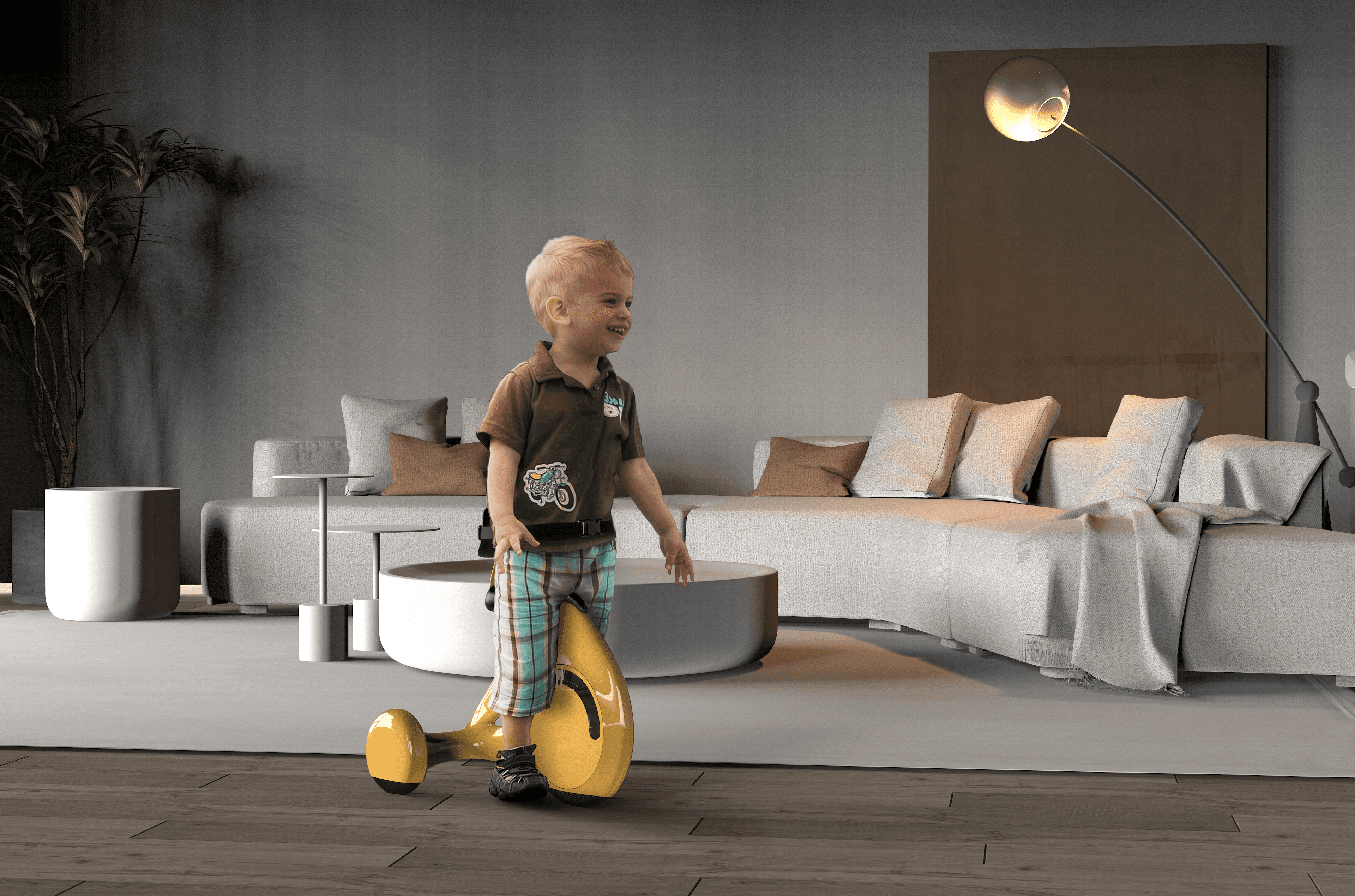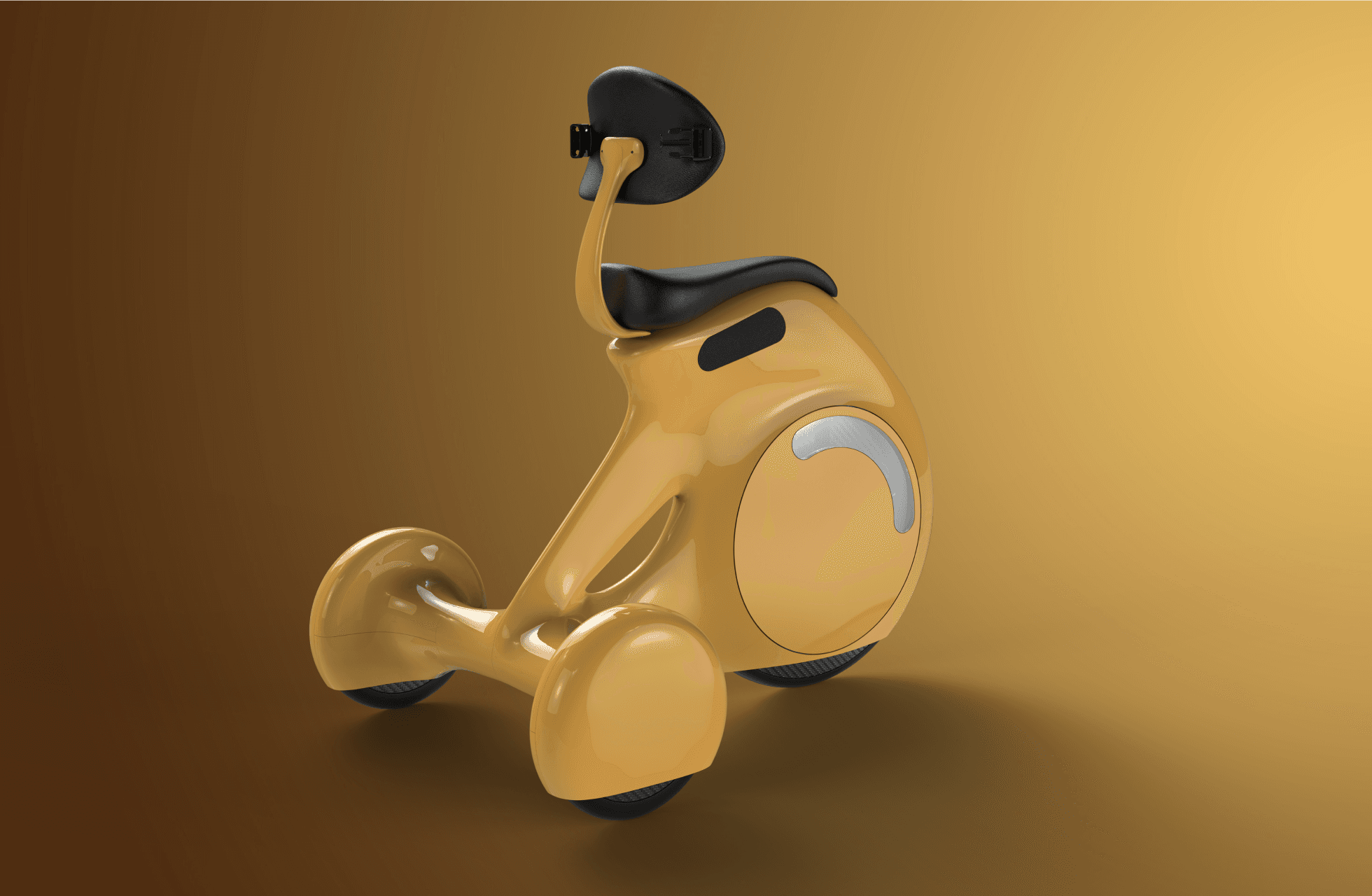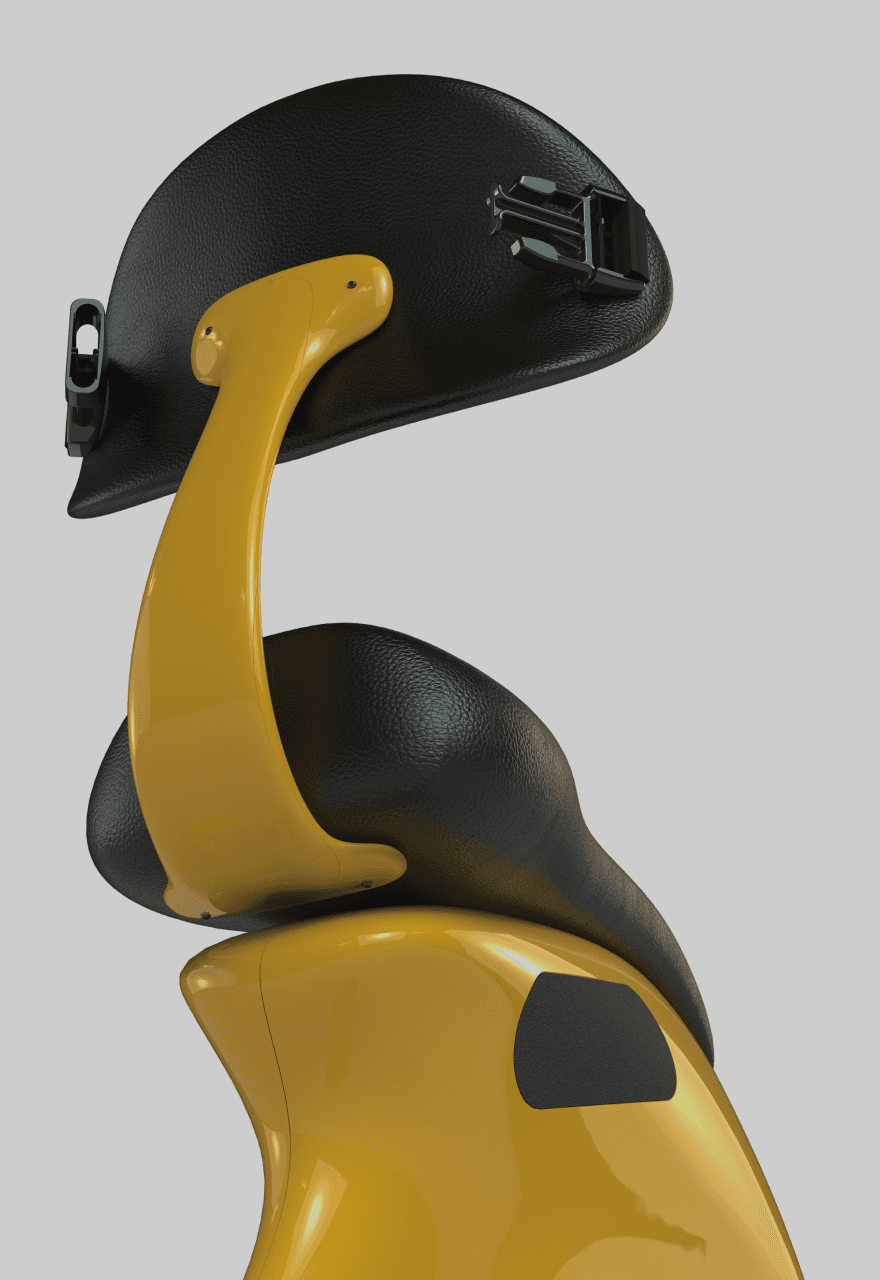Onboarding - Set your desired pick up location


Waking up - tell Ambulo to pick you up


Completing daily tasks independently - tell Ambulo to wait for you


Moving through compact spaces - control Ambulo using the joystick


Exercise - set your goal and check your progress with Ambulo


Ambulo is running out of power - let it return to its charger



User Journey
Ambulo
Walking aid for children with Osteogenesis Imperfecta (OI)

In collaboration with
Spring 2022

Ambulo is a smart walking aid that empowers children with Osteogenesis Imperfecta (OI) to move independently and safely.
Children with OI are prone to bone fractures through daily routines like walking and sleeping. One injury can cause bone and muscle distortion permanently. Thus, most of the OI children avoid independent physical activity.
Ambulo enables OI children from 4 to 8 to move safely and independently. Paired with its mobile app, Ambulo accurately propels and navigates patients through compact indoor space.
View project details on a larger screen












Ambulo is a smart walking aid that empowers children with Osteogenesis Imperfecta (OI) to move independently and safely.
Children with OI are prone to bone fractures through daily routines like walking and sleeping. One injury can cause bone and muscle distortion permanently. Thus, most of the OI children avoid independent physical activity.
Ambulo enables OI children from 4 to 8 to move safely and independently. Paired with its mobile app, Ambulo accurately propels and navigates patients through compact indoor space.
Ambulo
Walking aid for children with Osteogenesis Imperfecta


In collaboration with
Spring 2022
Junyi Yan

Physically
restricted from
exploring the world

Treated
unfairly
for their
physical condition

diagnosed
with
Osteogenesis Imperfecta
Motivation to Move
Physical Exercise


Activity With Friends


Exploring New Places


Desire to Blend in


This is the story of Jiaqin
a friend of ours who was diagnosed with Osteogenesis Imperfecta soon after birth
Peter’s Difficulties
injury from daily activities

Gender
Age at Diagnosis
Personality
Hobbies
Female
2
Introverted, Optimistic
Drawing, Watching TV


mobility in indoor spaces
not able to move independently

Osteogenesis Imperfecta (OI)
Known as the brittle bone disease, OI patients are prone to bone fractures and muscle injuries through daily routines such as walking, sleeping, or even sitting. Such symptom is especially prominent before 12 years old, when bones and muscles are rapidly growing. One injury can cause bone and muscle distortion permanently. Because of this, most of the OI patient choose to stay in a static position for most of their time. This lack of movement and exercise would further weaken their muscles, making independent movement harder.
healthy bone
OI bone
This is Osteogenesis Imperfecta (OI)
Young OI patients go through this vicious cycle:
Like other young OI patients, Jiaqin want to exercise to improve her condition, but is afraid to injure herself.
Lack of exercise would permanently weaken Jiaqin's muscles, which increases the chance of bone fractures
Muscles with Proficient Exercise
Muscles without Exercise
Fracturing their bones during daily activities
Participating in daily activities
Avoiding exercise due to fear of injury
Damaging their muscles permanently
Increasing the chance of bone fractures
Jiaqin is not alone, from a survey completed by 561 OI patients, we understand that Osteogenesis Imperfecta doesn’t only cause physical pain, but mental stress.
2013 National Report on Living Conditions of People with Osteogenesis Imperfecta 1.” Chinadolls, China-Dolls Center for Rare Disorders, 3 Aug. 2013, chinadolls.org.cn
Most patients gave up on getting treatments
300
225
150
75
0
Other
Patient without Treatment
Patient with Physical Therapy
Patient with Operative Treatment
Patient with Medication
Most patients avoid exercising
300
225
150
75
0
Other
No Exercise
Swimming
Wheelchair
Walk with Walking Aid
OI children go through these trade-offs:
they want to:
move and exercise independently
stay in a injury-free environment
participate in activities with their peers
risk of injuries
permanent muscle damage
discrimination against their body condition
but experiences:
How might we assist patients to move independently and exercise freely with confidence?
An IoT experience streamlining the walking aid interaction for children and their parents


Ambulo App
Typography
Comfortaa
Display
Bold, 64px
Display
Bold, 12px
Paragraph
Paragraph
Primary, 3957F4
Secondary, 7AA0EA
Tertiary, FF3D12
Hint, FAFAFA
Gray, 3D3D3C
Color
Dark, 1F1F1F
Bright, FFFFFF
Design System
Headline
Bold, 24px
Heading 1
Bold, 24px
Heading 2




